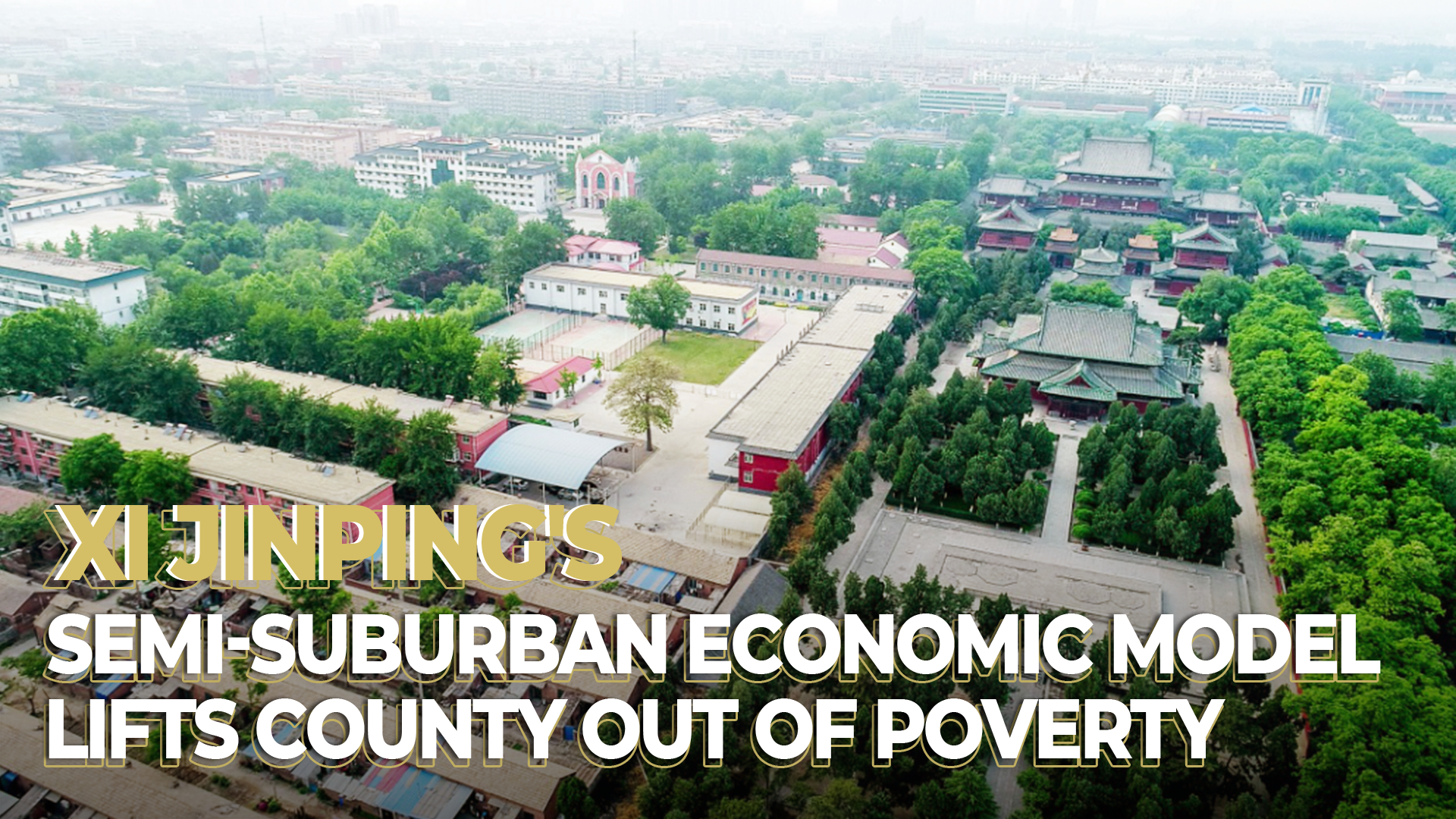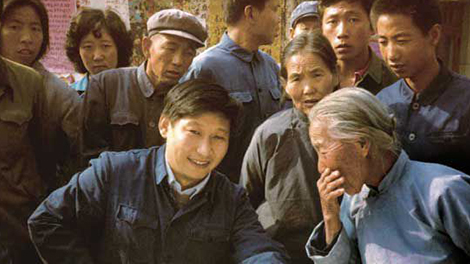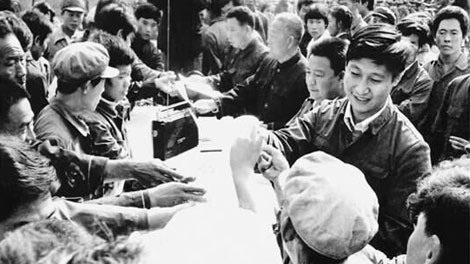10:02

Traveling to treacherous terrains, gathering information and fostering poverty relief programs, Chinese President Xi Jinping left his footprints in all the 221 villages as well as 25 communes in Zhengding, a once very poor county in Shijiazhuang City, north China's Hebei Province. He worked there for more than three years and helped locals lift themselves out of poverty.
A large number of people still lived in poverty in the 1980s when the country launched its policy of reform and opening-up – the biggest-ever economic reform since 1949 – and started witnessing rapid economic expansion. In 1982, Xi volunteered to take up the task of leading Zhengding's development by leveraging the opportunities brought by the opening-up policy.

File photo of Xi Jinping listening to a villager in Zhengding County, Shijiazhuang City, north China's Hebei Province. /Party School of the CPC Central Committee
File photo of Xi Jinping listening to a villager in Zhengding County, Shijiazhuang City, north China's Hebei Province. /Party School of the CPC Central Committee
He frequently visited the villages to know the situations on the ground. According to then officials, Xi was often seen in the fields on his bicycle, asking villagers about their income and crop yield.
Zhengding County was divided into two districts by a river and there was no bridge. To get to the other side, Xi had to cross a stretch of sandy riverbed. Local villagers often saw him carrying his bike on his shoulders and wading through the mud.
"When in office, officials should bring benefits to the people. We cannot work for one, two or three years without making any difference to the county. At the same time, we shouldn't be eager for instant success either," Xi told county-level CPC secretaries in a seminar at Party School of the CPC Central Committee in 2015.
As an agricultural county, Zhengding relied heavily on the primary industry, and 70 percent of its workforce was concentrated in agriculture. In 1984, Xi came up with the idea of a "Semi-Suburban Economic Model." As Zhengding is near Shijiazhuang, the biggest city in Hebei, the economic model means that Zhengding should grow, process and provide whatever Shijiazhuang needs to develop the local economy and improve villagers' income.

File photo of Xi Jinping with villagers in Zhengding County, Shijiazhuang City, north China's Hebei Province. /Party School of the CPC Central Committee
File photo of Xi Jinping with villagers in Zhengding County, Shijiazhuang City, north China's Hebei Province. /Party School of the CPC Central Committee
This economic approach entailed planting trees to contain strong winds before beginning to develop the local economy. So Xi mobilized local officials to teach farmers how to grow fruit trees. Villagers were provided with on-the-spot guidance as well as technical support. At the time, to increase people's incomes, each village was asked to build an orchard and each family a vineyard.
In the 1980s, though villagers were not familiar with the concept of market economy, everyone was looking for a path to wealth. When Xi introduced his economic development approach, it stoked many people's enthusiasm.
Wang Daoyong, a farmer in Xiguan Village, said that in 1983, after the farmland was distributed to the locals, his father started to grow vegetables, but he didn't get any financial support from the government. A year later, when the Semi-Suburban Economic Model was officially adopted, his father was supplied with plastic sheets and mulching film. And, after the greenhouses were built, personnel from the county government came to provide him technical guidance.
"The day I learned about my father's plan, I quit my job, which earned me only 60 yuan a month. After becoming a full-time vegetable grower, we could make 70 to 80 yuan every day. A year later, we accumulated 10,000 yuan and won the county's First Prosperous Household award," Wang said.
At first, only a few families in the village grew vegetables. But with the support of the county government, by the end of 1984, 60 to 70 percent of the households had joined in. Two years later, this figure rose to nearly 90 percent.

File photo of Xi Jinping(C) at a meeting with local officials in Zhengding County, Shijiazhuang City, north China's Hebei Province. /Party School of the CPC Central Committee
File photo of Xi Jinping(C) at a meeting with local officials in Zhengding County, Shijiazhuang City, north China's Hebei Province. /Party School of the CPC Central Committee
Official data shows that in 1984, nine indicators, including gross industrial and agricultural output value and per capita income, doubled compared to the figures in 1980. In addition, 10 indicators, including gross grain output and total volume of retail sales, broke Zhengding County's historical record.
The benefits brought by the economic model at that time have shown far-reaching implications: Zhengding's economy now ranks among the top 10 in Hebei, and its GDP and GDP per capita have increased over 300 times compared to 1978.
"As the old saying goes, when counties are well governed, the country enjoys peace. In the Party's organizational structure and the country's governance structure, county is a key middle link. It is the foundation for economic development, people's well-being, national stability and lasting peace," Xi said at the seminar in 2015.

